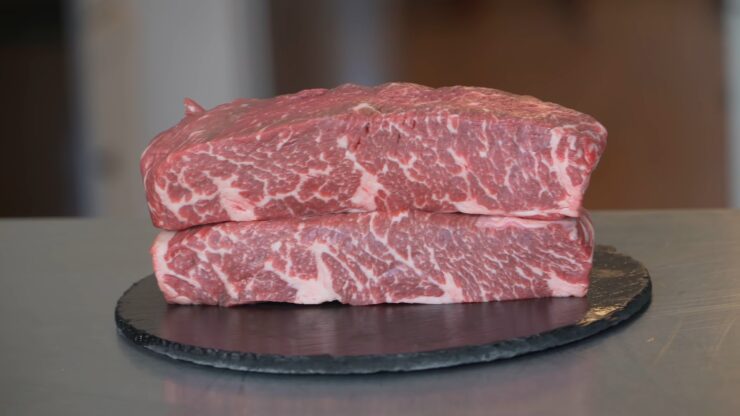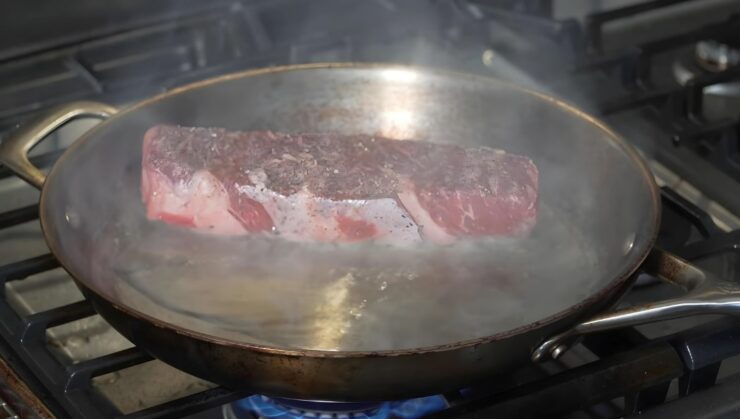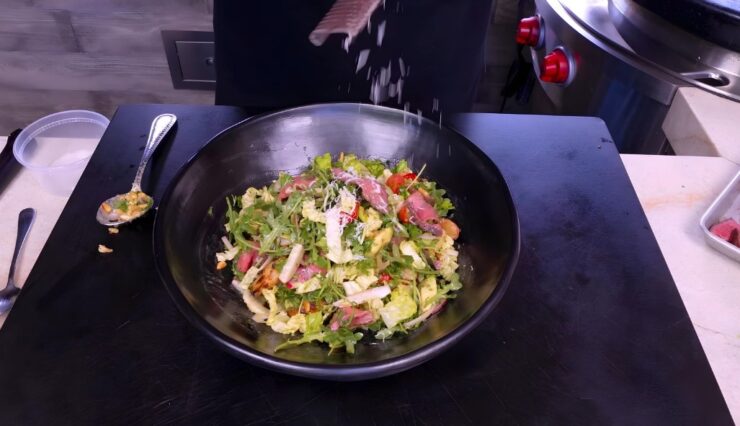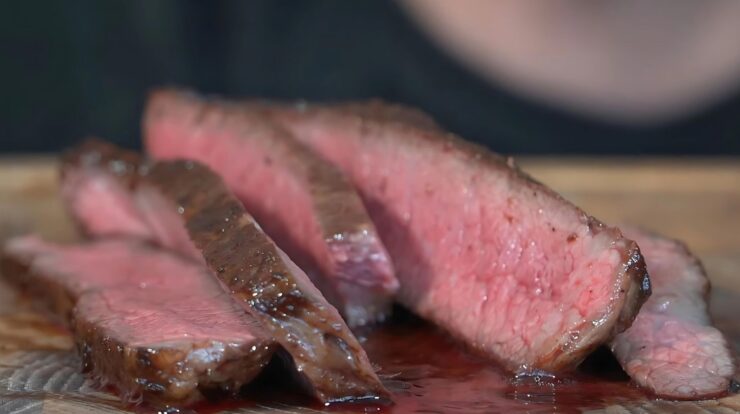As you can see on our blog, we made a lot of stories about our quest to share all that’s interesting in Denver. It is quite a journey, and we are having a lot of fun.
We have lately checked on many restaurants and made lists of the best Japanese BBQ places, and best overall eateries, along with reviews of zoos, and much more.
And now we decided to take a break from roaming around the city and having almost every meal in some fine restaurant. Also, one thing came to our mind – why not try making some of those delicious meals we had in previous weeks?
We saw many interesting recipes we wanted to try again, so today, we are preparing a classic Denver Steak at home.
Here is the recipe.
Ingredients
- 1 steak (about 1 to 1.5 inches thick)
- Salt (we prefer sea salt for its texture and flavor)
- Freshly ground black pepper
- Olive oil (extra virgin adds a nice flavor)
- Butter (unsalted, for that rich finish)
- Garlic (2 cloves, crushed or minced)
- Fresh rosemary or thyme (or both, why not?)
You will also need
- Cast iron skillet (for that perfect sear)
- Meat thermometer (essential for perfection)
- Tongs (for flipping)
- Aluminum foil (for resting the steak)
And Now, the Preparation

Take the steak out of the fridge about half an hour before you plan to cook it. That will make it cook evenly.
Season well with salt and pepper on both sides. A generous seasoning makes for a tasty crust.
Heat up your skillet on medium-high. It should be hot enough for a good sear but not smoking.
Cooking

Heat the skillet and add a bit of olive oil. Put the steak in and don’t move it for 4-5 minutes on one side to get a nice golden crust.
Turn the steak over, and toss in some butter, garlic, and herbs. Baste the steak with the melting butter for extra flavor and a perfect cook.
After flipping, cook it for 3-4 more minutes if you like it medium-rare. Check the heat with a thermometer; you want it between
130−135∘F(55-57°C).
Take the steak off the heat and cover it with foil for 10 minutes. This makes sure it’s juicy and tender all through.
Serving
Look for the lines in the steak and cut across them. The meat will be nice and tender.
Pair your steak with something light like roasted veggies or a crisp salad. Let the steak shine and keep everything else simple.
We Have Some Additional Tips

Cooking just one or two steaks at a time is a much better option. Trust me, I realized that this time when we were making only two.
The better the quality of your steak and seasonings, the better the taste. It’s worth the extra penny. Find a well-known store in your area, and buy fresh meat.
While we love rosemary and thyme, feel free to experiment with other herbs. Our choice was to keep things the same as in restaurants, but you can always make it your own.
Final Thoughts
We really enjoyed the process. And let me tell you this, it wasn’t even important what we were making, and how good the dish would be.
We just had a great time together while playing around in the kitchen.
And in the end, the food is always better when you make some effort for it, but if you’re just not meant to be good in the kitchen you can always go outside and eat tacos!
HI, I’m Richard. Me and my wife are on a journey to show you all those special places in Denver and around it. I am also the guy with the camera, responsible for capturing each moment and giving you a hands-on experience.
Related Posts:
- 10 Best Neighborhoods in Denver for Young…
- Colorado Springs vs Denver - Where Should You Live?
- 4 Best Italian Restaurants In Denver 2024 - Must-Visit Spots
- 8 Best Restaurants In Denver in 2024 - Mile-High…
- Top 9 Denver Airport Hotels With Shuttle in 2024 -…
- 5 Best Brunch In Denver in 2024 - A Foodie's Guide







